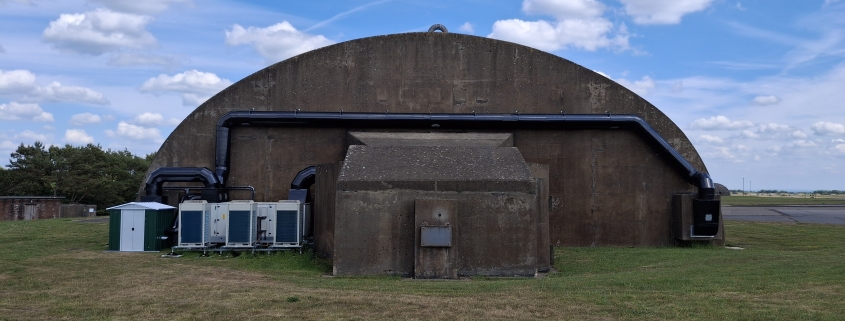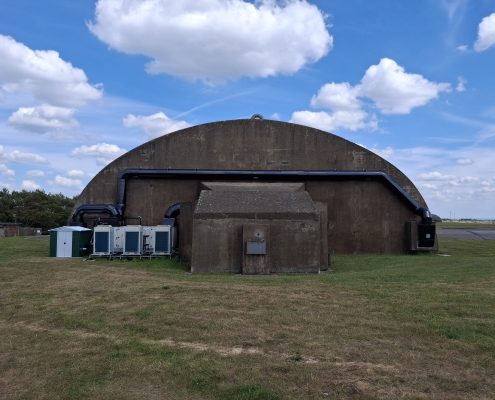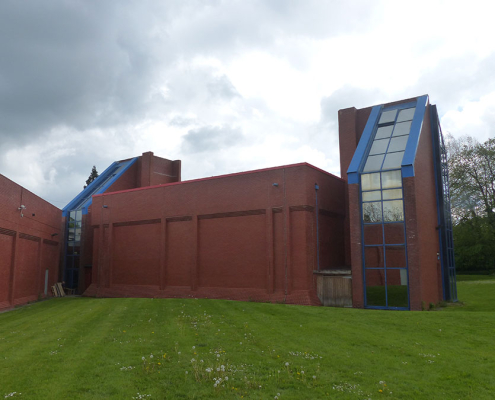Transforming a former aircraft hangar into climate-controlled archive storage
Protecting valuable records with precise environmental control
One of our specialisms is designing and installing precision-controlled air handling systems to provide optimal conditions when preserving archive material.
Items such as photographic film and paper are at risk of degradation from the air around them if it is not kept to the correct temperature and if the humidity isn’t controlled.
From one extreme to another
When we were tasked with converting a disused US Air Force hangar in Oxfordshire into an archive storage facility, it presented quite the challenge. While it is our day to day to create secure and stable archive environments at sensible running costs, converting a large area with limited insulation from a structure that was optimised for aircraft as opposed to precious artefacts meant we had to design a system that created predictability from a space designed for extremes – all while presenting the most environmentally-friendly options with the lowest possible energy consumption and emissions.
The approach
Any archive storage room requires a stable temperature and humidity level and an even distribution of conditioned air.
Following an initial consultation to fully understand the clients’ needs, we presented ideas and recommendations before detailing a comprehensive project development plan for transformation of such a unique space. The aim was to create a passive store with the HVAC equipment required for the times when the thermal mass of the building is overcome by the environmental external conditions, for example when experiencing harsh winter conditions or a spell of prolonged hot temperatures.
The thick blast proof structure provided a massive thermal mass which helped stabilise the temperature, so the daytime highs and night-time lows had little impact on the store.
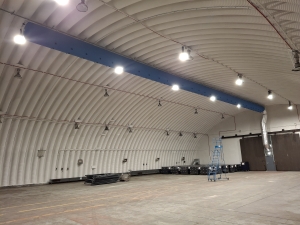
Due to the complexities of the space we were working in, we designed and implemented a custom HVAC system with high-efficiency air handling units and integrated humidity control, as well as utilising carefully routed ductwork to ensure that the air was distributed uniformly across the building. We installed ‘smart’ controls meaning the system would monitor the humidity levels and would only initialise the full HVAC system when the humidity rose above the set point. These controls also allowed the client to be able to monitor the air distribution in real-time.
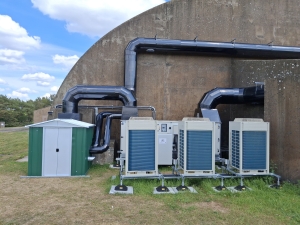
Results
Our system implemented a consistent temperature range of 14-24 degrees centigrade, with the relative humidity held between 45-55% to best protect the archival material. By implementing such a solution, we were also able to improve the energy efficiency by 30% when compared to conventional systems placed in such a complex space.
Our award-winning environmental control expertise built up over the past 50 years, shows how we can develop specific air handling conditions for archive storage in the most challenging of spaces.
Have you got a similar project we can help with?
If you manage archives, collections or temperature-sensitive storage, we can design systems that protect assets while keeping energy use under control. Let’s talk about your facility.
Project info
Project: Transforming a former aircraft hangar into climate-controlled archive storage, protecting valuable records with precise environmental control
Clients: Jamie Briggs archive storage

